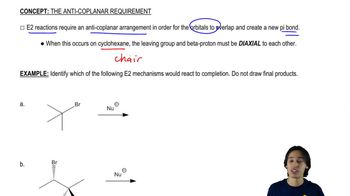How would you convert the following compounds to aromatic compounds?
(a)
(b)
(c)

 Verified step by step guidance
Verified step by step guidance Verified video answer for a similar problem:
Verified video answer for a similar problem:



 4:52m
4:52mMaster Aromaticity of Hydrocarbons with a bite sized video explanation from Johnny
Start learning